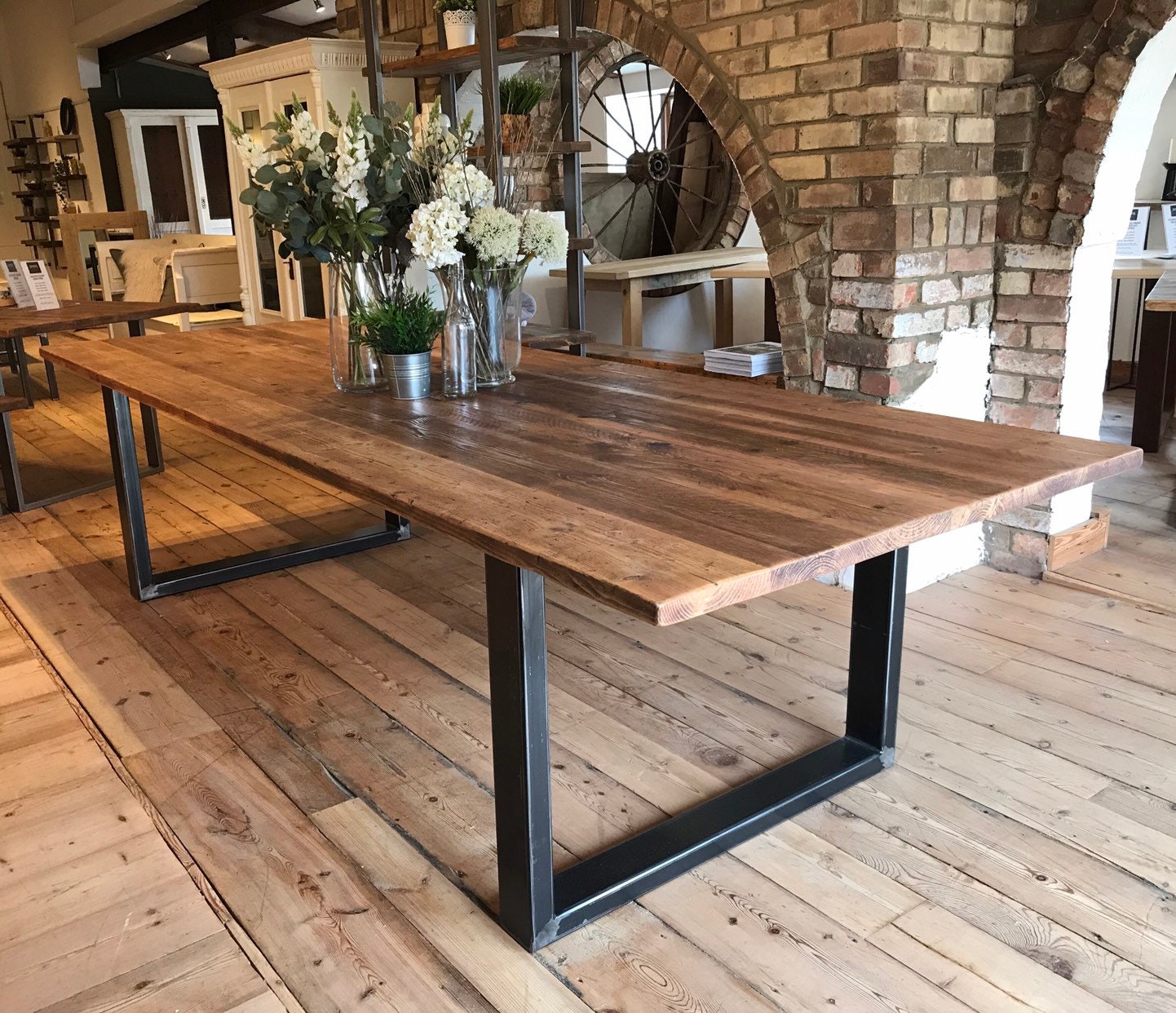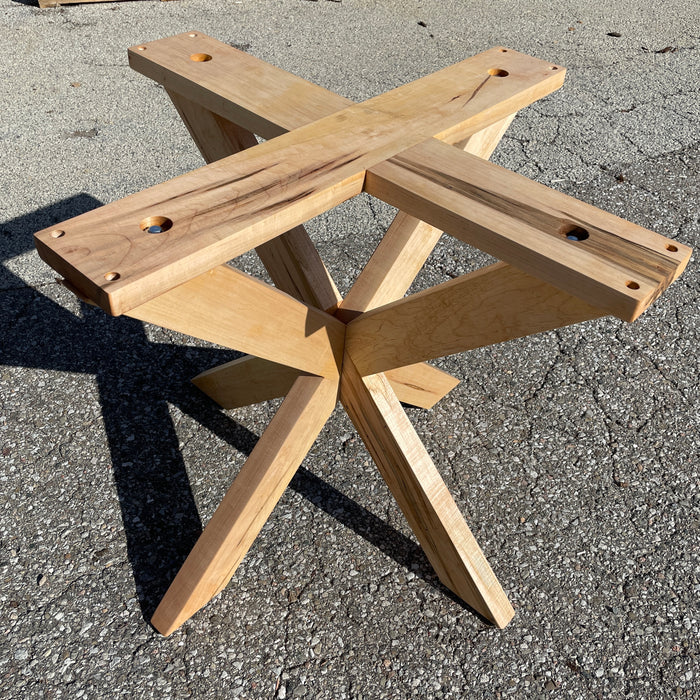Bring Heat and Character to Your Room with Dining Table Legs Wood
Bring Heat and Character to Your Room with Dining Table Legs Wood
Blog Article
Essential Considerations for Picking the Right Table Legs Timber
Picking the appropriate wood for eating table legs involves a nuanced understanding of numerous factors that influence both capability and aesthetic charm. The option of timber kind, ranging from robust woods to more delicate softwoods, plays a pivotal role in making certain durability and security. Additionally, considerations pertaining to budget, design, and upkeep need to be thoroughly assessed. Each of these elements can drastically affect the general experience of your eating room. Understanding how these elements interrelate is crucial for making an educated decision that meets your details requirements and preferences - Dining Table Legs Wood. What considerations will you focus on in your choice process?
Value of Timber Type

Hardwoods, such as oak, maple, and walnut, are typically chosen for their toughness and resistance to use. These types of timber give a durable foundation that can stand up to everyday use, making them ideal for dining tables that experience constant gatherings. In comparison, softer woods like pine might be a lot more susceptible to scratches and dents, which may not be ideal for high-traffic areas.
Furthermore, the choice of wood can also affect the simplicity of upkeep. Some timbers need regular oiling or sealing to preserve their look, while others might be more forgiving. Ultimately, choosing the appropriate wood type includes balancing visual factors to consider with sensible needs, ensuring that the eating table legs not only look enticing but likewise stand the examination of time.
Analyzing Security and Toughness
When assessing table legs, one have to think about the stability and strength they give to the total structure. The legs are important in supporting the table top and making sure the dining experience is satisfying and safe. A steady table is important for stopping tipping or tottering, which can bring about spills or accidents during dishes.
The selection of wood type considerably affects stamina. Woods such as oak, maple, and walnut are usually more robust and long lasting than softwoods like ache or fir. Additionally, the density and layout of the legs play a critical role; thicker legs or those with a conical style can offer better assistance and security.

Aesthetic Factors To Consider
While capability is extremely important, the aesthetic charm of dining table legs can not be neglected, as they considerably influence the total style and atmosphere of the dining space. The selection of timber, design, and coating can detract or boost from the table's aesthetic impact.

Coatings also play a vital function in aesthetics. A natural finish can highlight the wood's inherent charm, while repainted or discolored legs can introduce color and individuality right into the space. In addition, the proportion informative post and range of the legs about the tabletop and bordering furnishings needs to be taken into consideration to make certain aesthetic equilibrium and cohesion.
Eventually, the table legs need to not just serve a useful purpose but additionally add to a natural and inviting environment, making them a crucial factor to consider in the overall style of the dining location.
Upkeep Needs
To ensure longevity and protect the appeal of wooden table legs, routine maintenance is important (Dining Table Legs Wood). Timber is an all-natural material that can be susceptible to harm from dampness, warm, and wear. Developing a routine care plan will significantly enhance the resilience of your dining table legs.
Begin with routine dusting using a soft, lint-free fabric to remove dirt and particles that can scratch the surface. For more complete cleansing, utilize a light soap service and damp towel, preventing excess moisture that might seep into the wood. It is a good idea to apply a top notch timber polish or conditioner every few months to nourish the wood and preserve its luster.
Attend to any dents or scrapes promptly with appropriate wood filler or touch-up pens to stop more wear and tear. By adhering to these maintenance needs, you will certainly not just maintain the visual appeal of your wooden eating table legs but likewise extend their practical life expectancy.
Spending Plan and Price Elements
Budget plan click and expense factors regularly play a critical duty in the decision-making process for picking wood table legs. When reviewing options, it is important to develop a clear budget plan that straightens with your total furniture financial investment. The cost of wooden table legs can vary significantly based upon the kind of design, wood, and craftsmanship intricacy.
Woods such as cherry, walnut, and oak generally command greater costs as a result of their durability and visual appeal. In contrast, softer woods like yearn might be a lot more inexpensive however could not use the very same longevity. In addition, personalized or artisan-crafted legs can incur extra expenses, reflecting the skill and time purchased their creation.
It is likewise crucial to consider the potential long-term worth of your investment. While choosing for lower-cost materials might seem monetarily prudent originally, they may need more regular substitute or repairs, inevitably raising total expenditure.
As a result, balancing quality and expense is important. Prioritize products that satisfy your visual choices while guaranteeing they fit pleasantly within your budget plan, allowing you to create an eating area that is both visually appealing and practical.
Final Thought
In verdict, choosing the appropriate timber for dining table legs requires careful factor to consider of different variables, consisting of wood type, security, appearances, upkeep, and budget plan. Inevitably, a knowledgeable decision will certainly enhance the long life and aesthetic charm of the dining table, making certain fulfillment and capability for years to come.
Choosing the ideal kind of wood for eating table legs is crucial for both aesthetic allure and architectural stability. Eventually, choosing the ideal wood kind involves stabilizing aesthetic considerations with practical demands, guaranteeing that the eating table legs not just look enticing yet you could try here also stand the examination of time.
It is advisable to apply a high-grade wood polish or conditioner every few months to nourish the timber and maintain its luster.
The expense of wooden eating table legs can vary significantly based on the kind of workmanship, timber, and style complexity.
In verdict, picking the ideal wood for eating table legs necessitates cautious consideration of various elements, including timber kind, security, looks, maintenance, and budget.
Report this page